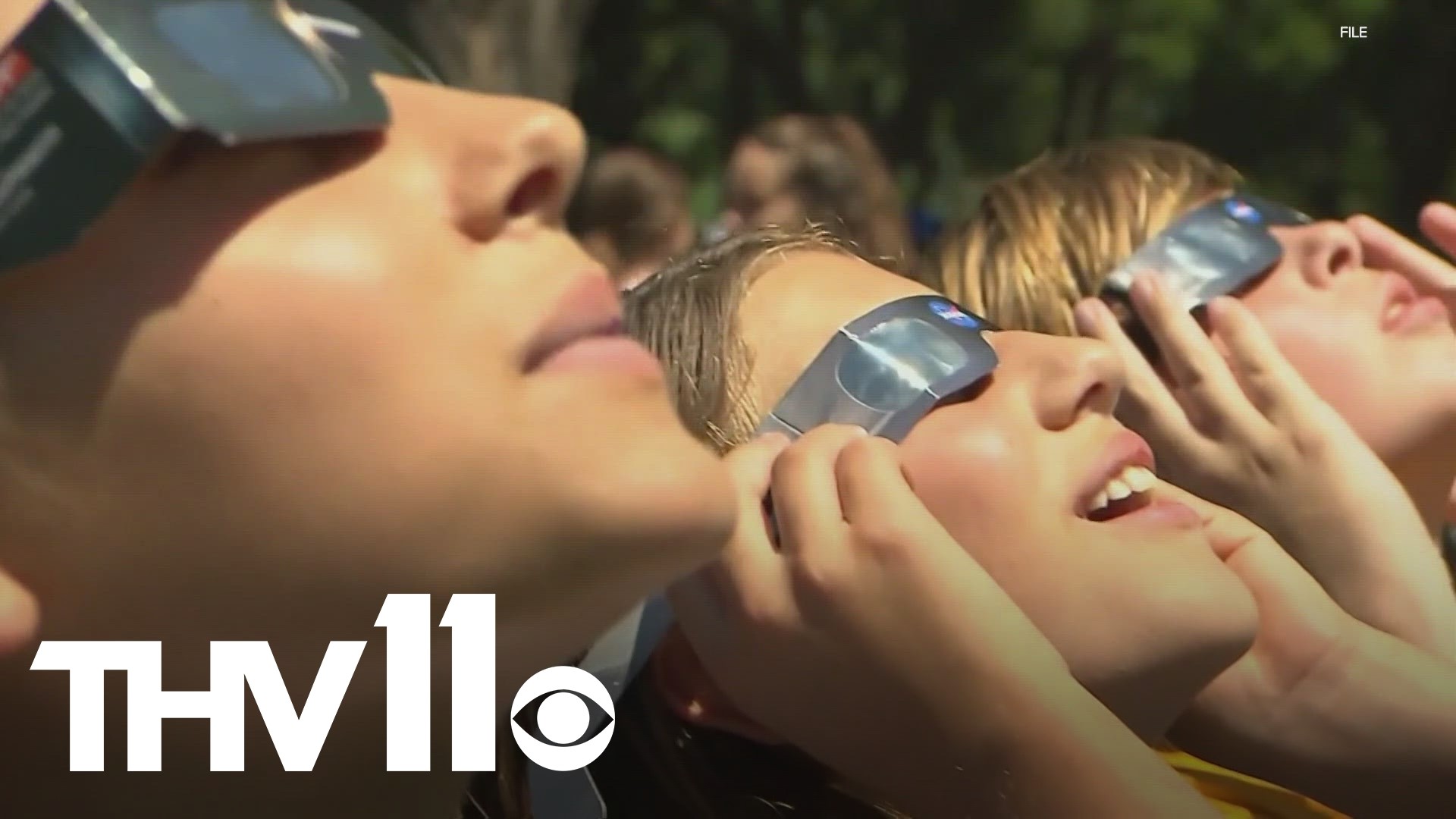LITTLE ROCK, Ark. — If you're like us, you are most likely starting your research to find out what are the best ways to view the upcoming total solar eclipse that will be making its way over Arkansas and several other states on April 8.
Below you will find information on the different ways you can view the eclipse safely, according to NASA. It is important to note that all of these methods are the safest way to view the eclipse.
And just as important, make sure to apply sunscreen to your face and body as you will be in direct sunlight for a significant amount of time.
Glasses
The most common way to view the eclipse is through eclipse glasses and NASA reiterates that these are not regular sunglasses.
Eclipse glasses are "thousands of times darker" and must comply with the international standard of ISO 12312-2.
Before you put them on, make sure to inspect for any issues. If the lenses are damaged in any way, you will have to throw them away. If you have children or are supervising children, it is especially important to monitor their use of the glasses.
And if you do have eclipse glasses on, please avoid looking through a camera or binoculars as those will have "concentrated solar rays." Those rays will burn through regular filters and cause an eye injury.
Handheld viewer
While handheld viewers are functionally the same as the glasses, the difference is that you will have to hold it up to your eyes.
Just like the glasses you will have to inspect for any damage before using them.
But if you do get tired holding up the viewer to your eyes, you can always switch which arm you use!
Also, here's another reminder to use sunscreen.
Indirect viewing
One of the most common ways of viewing an eclipse is through indirect viewing. These are devices or techniques used to avoid looking directly at the sun.
One way is through a pinhole projection. This works by turning your back to the sun and letting the sunlight pass through a small opening. Basically anything that has small holes can become a pinhole projector, which can be things like your colander or a piece of paper with a hole in it.
But you can also use your fingers to create the same effect.
"Just cross the outstretched, slightly open fingers of one hand over the outstretched, slightly open fingers of the other," said the American Astronomical Society on its website for the eclipse. "Then, with your back to the Sun, look at your hands’ shadow on the ground. The little spaces between your fingers will project a grid of small images on the ground."
As NASA notes: "Do NOT look at the sun through the pinhole!"
The AAS lists several other ways to view the eclipse indirectly including a sun funnel. Click here to learn about the different ways.
Cameras, binoculars, telescopes
If you wish to use a camera, binoculars, or a telescope, you will have to order a special lens filter to point them at the eclipse.
The benefit of this method is you will have a better view of the eclipse and your eyes will be protected through the special solar filters.
An astronomer or similar expert will be able to help you decide which is the proper way to install the solar filter.
The only time during the eclipse that you will be able to view it without eye protection is when the moon "completely obscures" the sun, according to NASA. This is the period known as totality, when you can't see "any part of the sun through eclipse glasses or a solar viewer."
The total solar eclipse, which will cut a path from Texas to Maine, will make its way over most of Arkansas where many will see the path of totality from 1:50 p.m. until right around 2 p.m.

